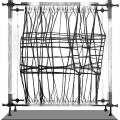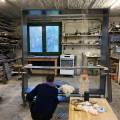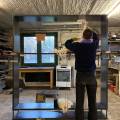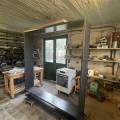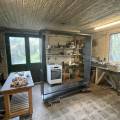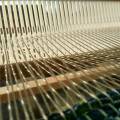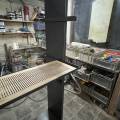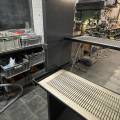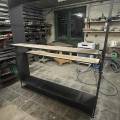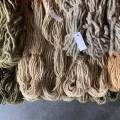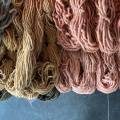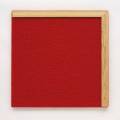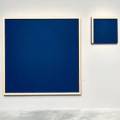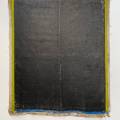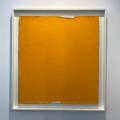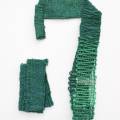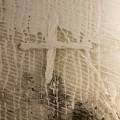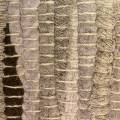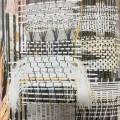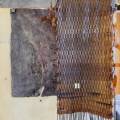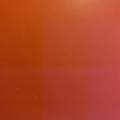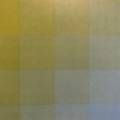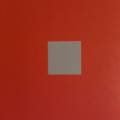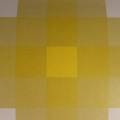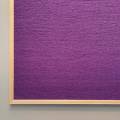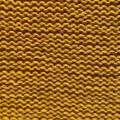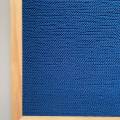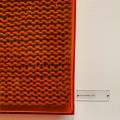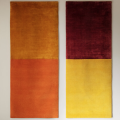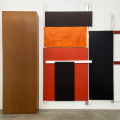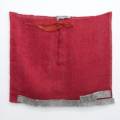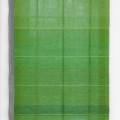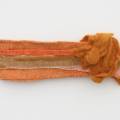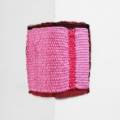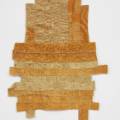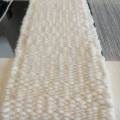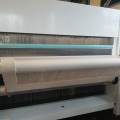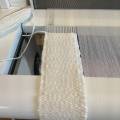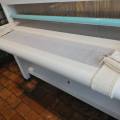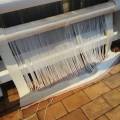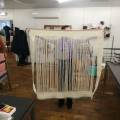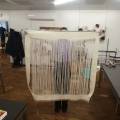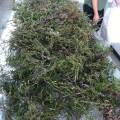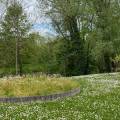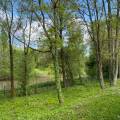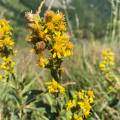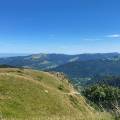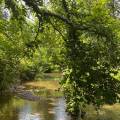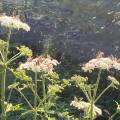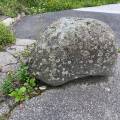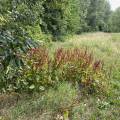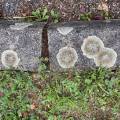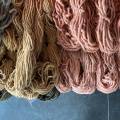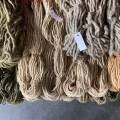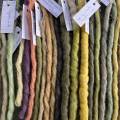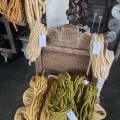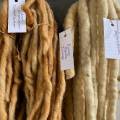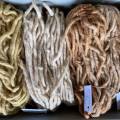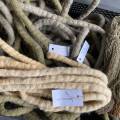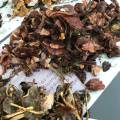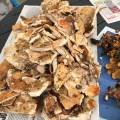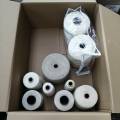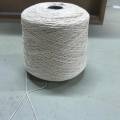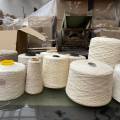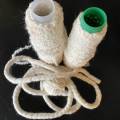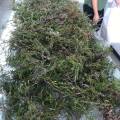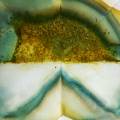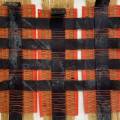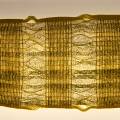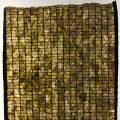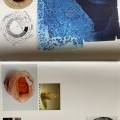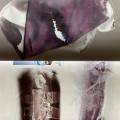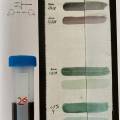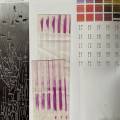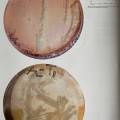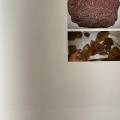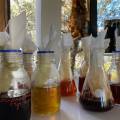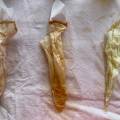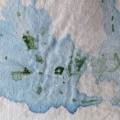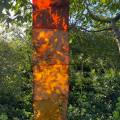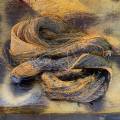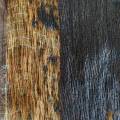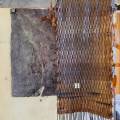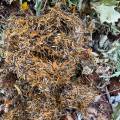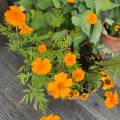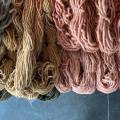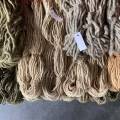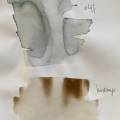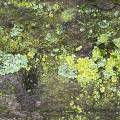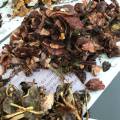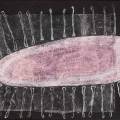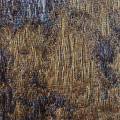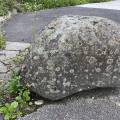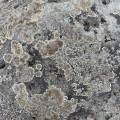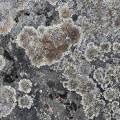Table of Contents
Alchimia Nova : production
planning residency 1
- 22/7 14h conference call Strasbourg / Mulhouse
- Arrivée le 02 juillet
- Dimanche 03 juillet : sortie dans les Vosges (lieu et itinéraire à définir : je vais prendre contact avec Clément Urion pour des conseils de sites à voir/plantes endémiques des Chaumes). Cette journée se ferait avec Sandrine, Pierre, et nous avons pensé également à inviter les ambassadeurs N.A. que nous avons rencontré lors de notre venue à l’entreprise Solinest.
- Lundi 04 juillet :
- Rdv à La Kunsthalle à 8h30 avec Marine Ambrosini (médiatrice à La KH, qui assurera notamment des accueils de groupes et ateliers sur ton exposition à venir, et qui est très intéressée par le fait de suivre tes projets dès cette étape). Nous nous rendrons à l’Ill Wald à Sélestat (L'Ill*Wald - Ville de Sélestat (selestat.fr) , une réserve naturelle magnifique. Nous y avons l’autorisation de prélever des échantillons de terre ainsi que de ramasser des branches (avec lichen) . Les autorités en charge de la surveillance des bonnes pratiques sur site sont prévenues de notre venue. Tu trouveras en PJ des plaquettes concernant l’endroit et les « bons gestes » de rigueur.
- Sur le chemin du retour, nous ferons un crochet par une zone aux abords du Rhin (je suis en quête d’une zone encore sauvage du Rhin)
- A 14h, nous avons rdv avec Marie-Paule Bilger à Motoco pour un temps d’échange ainsi que de récolte de plantes tinctoriales sur le site de DMC à proximité de Motoco
- A 16h environ, retour à l’appartement pour déposer la « récolte du jour » et prendre les affaires pour Strasbourg
- 17h15 : train pour Strasbourg
- Mardi 05: laboratoire avec Sergio Ortiz
- Mercredi 06: laboratoire avec Sergio
- Jeudi 07 : laboratoire avec Pierre.
- Jeudi 07 au soir : retour à Mulhouse
- Vendredi 08 : au matin, réunion de bilan avec Sandrine et moi.
- Vendredi 08 : Départ dans la journée pour Venise
planning residency 2
- November 2022
- University Strasbourg: microscope material (SEM + Light)
- Winogradski columns with people Solinest
- checken verse en gedroogde verfplanten, bibliotheek aanmaken
- Researching local weaving material (garens, stoffen, corderie)
- verfstoffen bibliotheek aanmaken: staaltjes maken
Sandrine + Emma, 8/7/2022
ToDo
- Mélanie: booking/trein 2x/city hotel tax/tram Strasbourg
- Budget met Sandrine
- Overview Kunsthalle (sandrine of emma)
- Lijst planten te plukken/drogen met Emma (plukken nu, bewerken november)
- ⇒ ortilles, betteraves rouges, mûres, myrtilles, renouée de japon, vigne, juniperus (genièvre), oignon
- Lijst planten te behandelen in september (stagiaire) met Pierre
- Planten voor stagiaire (echte kamille, adderwortel, netels, st.janskruid)
- Lichen, plaatsen checken met Gisèle Archipoff (botanist)
- Lichen rotsblok (MoToCo)
- Potten uit collectie Pharmacopie
- Stoffen (katoen, doek, ander)
- Garens (wit, DMC) ⇒ sponsoring?
- Corderie: wat is er mogelijk?
- Vragen: dienstlift? Afmetingen? Afmetingen bestaande sokkels.
- Naaimachine ter plaatse
ToDo for Exhibition
1. collect & decide: aquaria (home + Leda + Biotopia + Kunsthalle)
2. supports / shelves (wood, 5cm thick)
- WonderWall
- aquaria
- Winogradski’s
3. glazen afdekplaten aquaria
4. Recyclart: metal holder for wool and small metal pieces for latex works
5. index of all works + make titles
winogradski cultures
- Workshop avec les Ambassadeurs de Solinest/N.A! (jeudi 24/11) (mud, calcium carbonate, calcium sulfate, egg yolks, cellulose, rainwater)
- Winogradski Culture: How To? winogradski_howto.pdf
- Prélèvements d’échantillons de sol à différents endroits aux abords de Solinest (jardin + berge de l’Ill + dans l'Ill)
- Prises de vue / photos des lieux de prélèvements
- Etude des échantillons au laboratoire de Pierre Fetcher (UniStra), en novembre pendant la deuxième résidence
- Analyse et Micrographies SEM (Scanning Electron Microscope) de la vie invisible dans le sol. Film + Micrographies.
design LOOM
- kader weefgetouw 2000mm x 2000mm
- aluminium latten
- industriële bouten
- geplaatst op stevige sokkel (zware metalen plaat? ander?)
- dubbel weefgetouw ⇒ gaatjes voor ketting aan 2 zijden
- diameter gaatjes is 1,5mm
- afstand tussen de gaatjes voor de ketting is 2,5mm ⇒ 4 kettingdraden per 1cm
De stijl is simpel en minimalistisch, maar met mooie duurzame materialen uitgevoerd.
Industriële look met dikke ijzeren bouten (zoals de oude bouten die je me liet zien, die lagen in jouw atelierkast). Belangrijk: het is een dubbel weefgetouw, waar door 2 personen tegelijk, elk aan 1 kant, kan gewerkt worden tijdens een performance. Het weefgetouw moet dus zeer stevig op de grond staan en er mag geen risico zijn op omvallen.
De materialen: Ik zou de 4 planken (en ev. ook de sokkel) uitgevoerd zien in donker geolied hardhout. Teak (of kerselaar), een donker glad hout. Er is spatie tussen de 4 planken (zie tekening), de planken komen dus NIET tegen mekaar. De verbinding door de bouten is duidelijk zichtbaar. De bouten moeten donker metaal zijn (zoals degene die je me liet zien), niet aluminium of vernikkeld. Ik zag als sokkel een zware metalen vloerplaat van 5 à 8 mm dik. Maar je kan uiteraard een andere oplossing voorstellen, ev. in hout, van het moment dat het past bij de minimalistische stijl. Belangrijk is dat het weefgetouw uit mekaar kan gehaald worden voor transport.
De uitvoering / maten: als richtlijn voor het kader hou ik aan 200cm x 200cm, een vierkant kader dus. Maar indien voordeliger met planken, of makkelijker werkbaar of zo, dan kan je gaan tot 175 x 175 of alles daartussenin, van het moment dat het vierkant blijft. De sokkel zie ik op 30cm - ik bedoel: de onderkant van de onderste plank van het vierkant komt dus 30cm boven de grond. De planken moeten voldoende dikte hebben om de kader mooi rechtop te kunnen dragen, als referentie kunnen we de dikste planken nemen die je me liet zien in je atelier. De diepte van de planken zie ik tussen de 25cm en de 30cm, relatief aan de verhoudingen/grootte van het vierkant. En zo diep als nodig om stevig op de grond te staan. Voor de sokkel wacht ik dus op een voorstel van jou, wat kan voor de stabiliteit. In elk geval moet het iets simpel zijn.
Als ik spreek van de metalen plaat, dan zag ik die plaat ook met zware bouten vastgemaakt in het hout, dus eenzelfde design als de kader.
Voor het opzetten van de ketting kunnen we werken met diagonale reeksen nageltjes, zoals je doet op je kleinere weeframen. Ik zou 2 nageltjes per cm zetten, is dit een goed gemiddelde voor zo’n grootte? Ik volg hier wat jij voorstelt. Wel dus aan 2 kanten weefbaar. En onderaan misschien een bescherming voorzien voor de nagels? Zie jij die nagels ONDER de onderste plank, of in de zijkant van de plank?
Verder zou het ook handig zijn om 1 - of indien makkelijker te maken 2 - kettingspreaders te hebben. En grote spoelen. En enkele aandrukkammen.
Weven op de loom
De bedoeling is om een kleurenkaart van de regio te presenteren onder geweven vorm. Er zijn verschillende mogelijkheden om dit te realiseren: volgens de kleurenleer van Johannes Itten en Josef Albers (Bauhaus), of een patchwork maken van allemaal verschillende losse stukken per kleur, in verschillende garendiktes en met verschillende bindingen geweven. Deze aparte stukken kunnen als een patchwork op een muur, of opgehangen in de ruimte, bevestigd worden over de loop van de tentoonstelling. Op de muur komen geschreven aantekeningen over planten en hun pigmenten, vindplaatsen, mappen en kaarten, fotoos, verfmengsels, testen, artist-book-in-wording …
reference for presentation
- Hella Jongerius
- Hana Miletic
- Rosemarie Trockel
- Silvia Federici
- make titles (art & language)
ToDo met Nora
1. planten verzamelen (eucalyptus bladeren, duindoorn, sporkeboom, boerenwormkruid) ⇒ check gidsen
2. weefmateriaal onderzoek en bestellen. Lokaal materiaal Mulhouse (corderie, DMC). Materiaal elders (B&T textiel, belgië / weefgetouwen Meta, Antwerpen, myrobolan, textielLab Tilburg, doeken Printcubator, andere, eventueel wol)
3. strengen maken van de garens. Machientje voor strengen maken.
4. kleuren maken en testen op verschillende materialen. Kleuren/stalenkaart maken + fotoos
5. onderzoek productie weefmachine (lasertek, Jonathan Portugal, Meta weefgetouwen)
verven met plantenmateriaal
1. de stof prepareren in tanninerijk aftreksel ('engallage'). Ik deed het in een infuus van bladeren van wilde braamstruik. Gewicht bladeren = gewicht droge stof. 1 uur laten trekken in het infuus.
2. daarna de natte stof overbrengen naar water met daarin opgelost 20% aluin, 10% crème de tartre, 2% carbonate de soude. 1 uur laten sudderen. Stof uithalen, spoelen en laten drogen. (500gr/ml water; 100gr. aluin, 50gr crème de tartre, 10gr carbonate de soude).
3. testen met verschillende planten-infusen. Ik deed 5gr droog plantmateriaal op 200gr water. Deze concentratie is absoluut niet strek genoeg. Er moet veel meer droog plantmateriaal in het water om een meer geconcentreerde oplossing te krijgen.
4. gebruikt materiaal: eucalyptus schors 5%; eucalyptus leaves 5%; wilde venkel 5%; wilde wortel (Daucus carota) 5%; koninginnekruid 5%; lavendel bloemen 5%; Tussilago farfala bladeren 5%; valse indigo leaves 5%; spirulina poeder 2,5%; rode biet biotona poeder 2,5%; tamme kastagne twigs 5%:
5. zie testresultaten op kleenex en op geprepareerde katoen (aluin + crème tartre + cabonate de soude). Papieren zakdoekjes 12u gemacereerd in koud infuus, geprepareerde katoen 24u gemacereerd in koud infuus in de zon en 2de helft van de teststroken gemodifiëerd door toevoegen van ijzersulfaat (Fe).
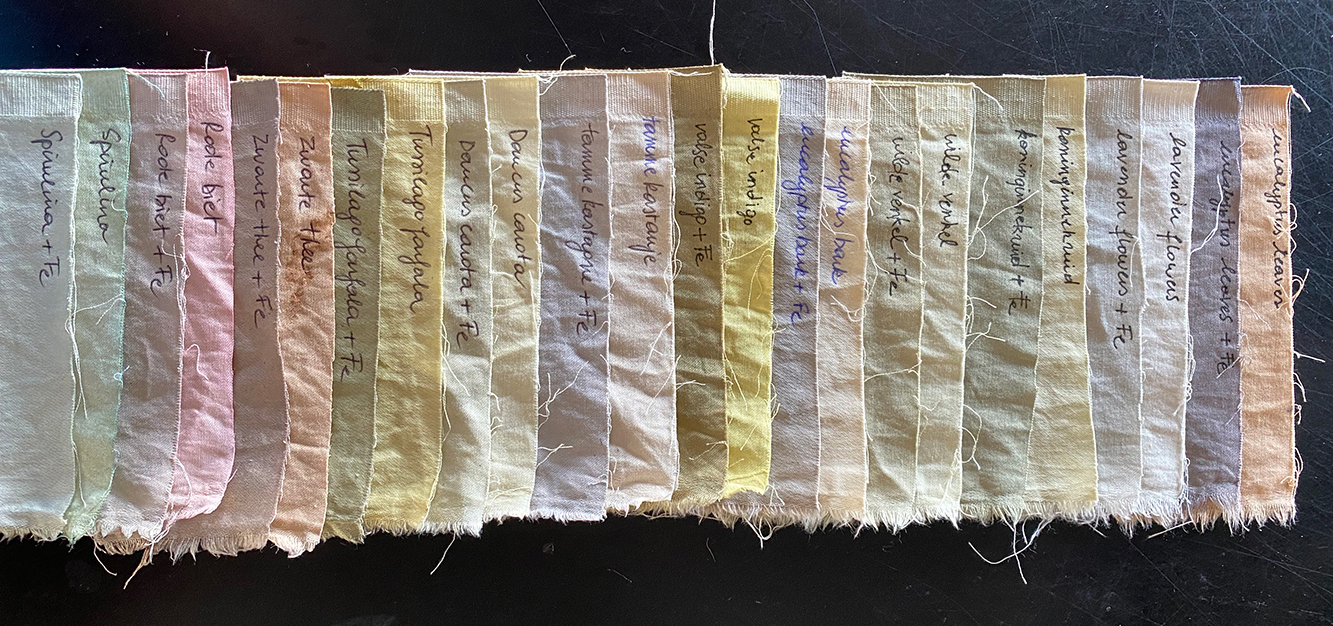

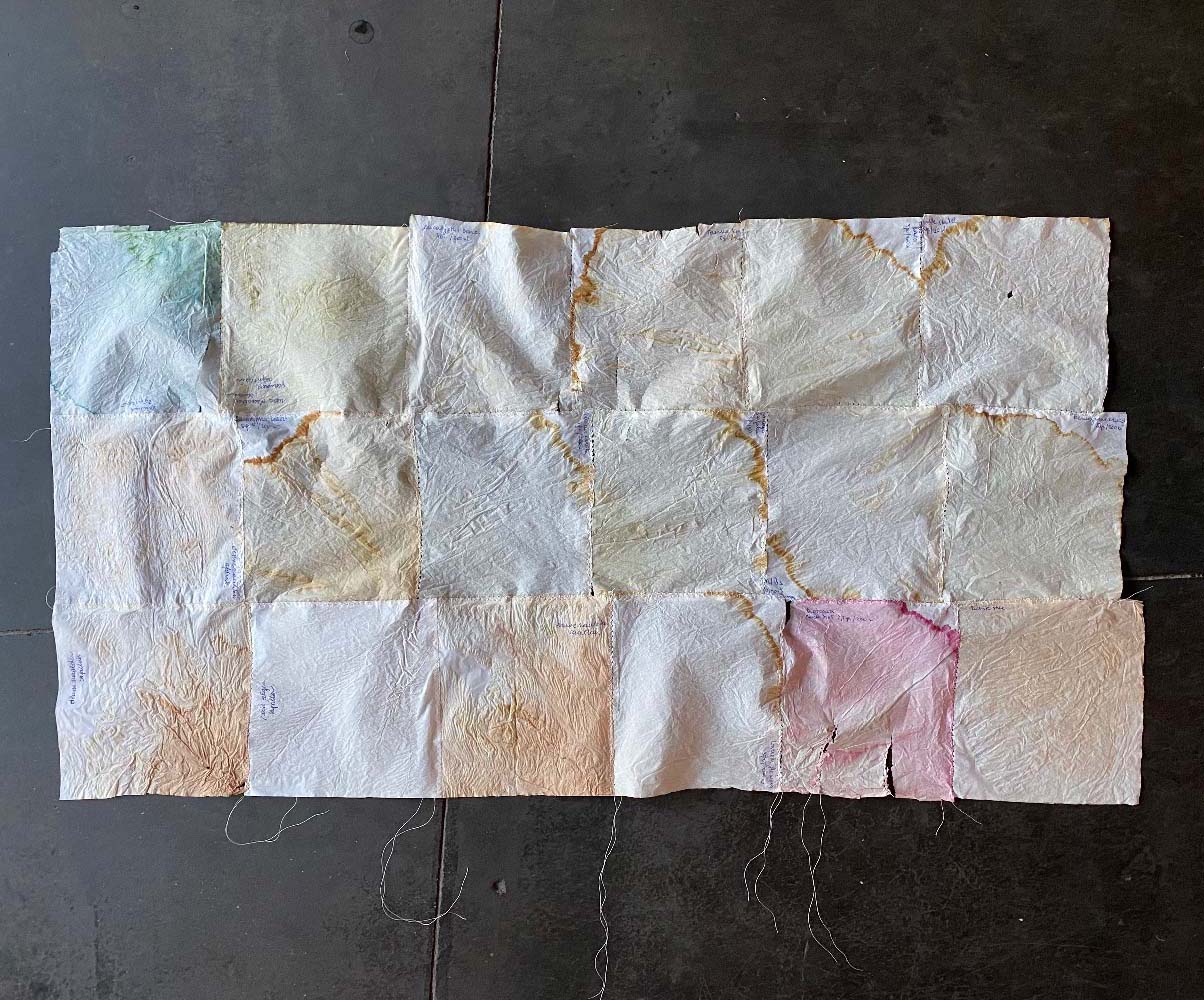
Modyfyers:
- lemon (acid) turns for ex. the purple red cabbage into red
- baking soda (base) turns the red cabbage into dark blue/purple
wol verven met plantpigmenten
usefull links:
Mushroom_mordant Recipes
Mushroom_Dye
Cortinarius semisanguineus
Zwavelzwam
geel/rood uit Groot Dooiermos (lichen)
Natural Dyes from Plants, Lichen and Mushrooms
Lakmoes, pH indicator gewonnen uit Lichen Pigmenten
Colorants, Encres et Pigments des Végétaux
plantes à recolter
Anthotype Printing - printing with plant emulsions
fermentation in the aquariums
1. fermentation dans les aquariums:
- 500 gr de feuilles de thé noir en vrac pour la fermentation
- 4 kg de sucre blanc cristallisé (le moins cher)
- 4 litres de vinaigre blanc (le moins cher)
- chauffe-eau électrique
- 2 seaux en plastique de 10 l
- longue cuillère en bois
- tamis ménager en plastique, diamètre ± 25cm
- torchon de cuisine
2. 3 x lattes en métal de longueur 165cm, largeur 20mm, épaisseur 2mm
⇒ une pour fixer au mur D, pour accrocher la grande photo ‘Exoskeleton’ avec des aiments.
Moi j’apporterais les aimants.
⇒ deux pour allourdir en bas les 2 tapisseries
3. serait-il possible d’avoir une machine à coudre pendant le montage?
Est-ce que on peut emprunter à quelqu’un une machine?
recept fermentatie
kombucha recept 3 liter
- 24 gr losse zwarte of groene thee
- 300 gr witte suiker
- 3 l water (met weinig mineralen)
- 300 ml kombucha van vorige bereiding
- https://www.kefirshop.eu/nl/kombucha-scoby-xl.html
garens
B&T textilia / Waarschoot: Er staat materiaal opzij voor ons. Vooral de wol is van hele goede kwaliteit. Er zit ook linnen, katoen, wol en papierdraad bij. Marie-Anne mailen om een afspraak te maken en ze op te halen. Zij is er normaal gesproken iedere werkdag. T +32 9 377 37 01 - E info@bttextilia.com
planning met Nora
Vanaf de week van 17/10 werken we 1 dagen per week:
woensdag 19/10/22: 10-18
dinsdag 25/10/22: 10-18
dinsdag 1/11/22: 10-18
vrijdag 18/11/22: atelier Mechelen
december: kaften van artist books Palais de Tokyo maken (1 dag)
woensdag 14/12/22: ontwerpen te weven stukken in textielmuseum + stikken quilts paper
maandag 19/12/22: halve dag textielmuseum
dinsdag 20/12/22: dikke halve dag textielmuseum
textielmuseum Gent: donderdag 12/01/23
textielmuseum Gent: vrijdag 13/01/23
textielmuseum Gent: 23/01/2023/half
textielmuseum Gent: 24/01/2023
fluffy bacteria kussen Brussel: 25/1/2023
textielmuseum Gent: donderdag 9 februari 2023
textielmuseum Gent: vrijdag 10 februari 2023
Artist Book
Het volledige proces van research, productie en expo/performance wordt gedocumenteerd in een artist book (SEM, soil bacteria, plantencomposieten, herbaria)
[Écrire l'art] Auteure associée en 2023, Véronique Vassiliou est invitée à s’immerger dans l’univers des trois expositions annuelles et composer librement autour des œuvres selon son langage spécifique.
Cette semaine, Véronique Vassiliou s'est inspirée de l'exposition “Achimia Nova” d'Annemarie_Maes pour écrire un texte inédit !
Résidence réalisée en partenariat avec l'Institut de recherche en Langues et Littératures Européennes (ILLE) de l'Université de Haute-Alsace UHA
Workshop Winogradski columns
With the N.A. ambassadors.
Art Critique
vous trouverez ci-joint le lien qui mène au drive sur lequel nous avons rédigé toutes les questions pour l’interview. Compte tenu de votre emploi du temps chargé et des délais à respecter, nous avons convenus de vous envoyer la liste complète. Vous pouvez inscrire vos réponses directement sur le document :
Google doc étudiants critique d'Art
Anne Marie and Pierre both work with non-human living beings, the first as an artist and the latter as a scientist. It is from this meeting point that a partnership with Pierre's microbiology lab was created during Anne-Marie's residency. How could we define the collaboration between artists and scientists?
Collaboration between artists and scientists can be defined as a partnership or working relationship in which artists and scientists come together to combine their skills, knowledge, and perspectives in order to achieve a common goal. This could involve the artist using scientific concepts, methods, or data as a source of inspiration for their artistic work, or the scientist incorporating artistic techniques or approaches into their research. The collaboration may take many forms, including joint projects, exhibitions, performances, or publications. The goal of such collaborations may be to create new insights, raise awareness about scientific issues, or simply to explore the intersection of art and science in a creative way. Ultimately, the collaboration between artists and scientists can be seen as a way to bridge the gap between these two fields and to facilitate new ways of thinking and understanding the world.
What has working together brought you mutually and individually?
In general, collaboration between artists and scientists can bring a range of benefits to both parties. On a mutual level, such collaborations can lead to new insights, perspectives, and approaches to problem-solving that may not have been possible if each party worked independently. Collaboration can also facilitate the exchange of ideas and knowledge between the two fields of art and science, leading to a more holistic understanding of the world and the issues being studied.
On an individual level, collaboration can provide opportunities for personal and professional growth, as well as the chance to learn new skills and techniques. It can also be a rewarding experience in terms of creativity, as the combination of artistic and scientific approaches can lead to innovative and unique outcomes.
During our collaboration, we studied soil bacteria , but each of us had our own starting point. Anne Marie wanted to study these bacteria to know more about how these soil bacteria affect the generation of certain contents in plants, mainly concerning the pigments that plants produce. Pierre is studying soil bacteria to find out how certain bacteria react to certain plant ingredients from medieval medical recipes, in order to develop an alternative to antibiotics. So each had its own starting point, but the lines of research could certainly intersect. However, it is far too early to speak of a result that this collaboration has produced. We worked together for only a few days! A serious artist/scientist in-lab residency takes months or years before one can speak of a real result. It is common for collaborations to take time to develop and yield results, especially if they involve complex or multi-faceted research. It is also important to keep in mind that not all collaborations will necessarily produce tangible outcomes or results, as the process of collaboration itself can be valuable and enriching.
The title Alchimia Nova, carries with it a whole imaginary around the transformation of materials. This is visible through the processes that are revealed in the exhibition. By designating it as new (nova), what links do you establish between alchemy and your artistic practice?
The title Alchimia Nova, carries with it a whole imaginary around the transformation of materials. This is visible through the processes that are revealed in the exhibition. By designating it as new (nova), what links do you establish between alchemy and your artistic practice?
The term ‘alchemy’ refers to a practice that was popular in medieval times, in which practitioners attempted to transform base metals into gold. The pursuit of knowledge and the search for spiritual enlightenment were both very important, and their practices involved both laboratory work and philosophical elements.With the use of the term ‘alchimia nova’ as title of the exhibition I suggest that my work is drawing on the historical and symbolic associations of alchemy as a way to reference the idea of transformation and the pursuit of knowledge. But ‘alchimia nova’ indicates also that the exhibition represents a contemporary interpretation of alchemy, rather than a literal or historical re-creation of the practice. The term ‘nova’ is a reference to the exhibition's contemporary context and its relevance to contemporary artistic practices.
Several pieces were created and painted based on plant or soil samples from Alsace. The exhibition is thus anchored in the geographical space that surrounds it. What would the chromatic palette of this area look like?
That is what we will discover in the exhibition. The representation of the palette will always be a snapshot anyway, because the pigments in the plants depend on many elements, such as weather conditions, the type of soil in which the plants grow, the moments when the plants are collected.
What I personally find interesting is to artistically show how all life in an ecosystem is intertwined, how everything affects each other. A recurring symbol for this in the exhibition is “the network” “the rhizome. One can look at this literally, from biology, but we can also look at it symbolically, from contemporary art.
'Alchimia Nova' has a focus on organic works, which often also contain some form of network, or are themselves part of an interwoven whole. The videos, objects and installations are embedded in a complex fabric of cultural, ecological and technological developments. When we zoom out, such a fabric can be seen as a map, a vast world of knowledge that we can never fully grasp but in which we can follow some personal lines to explore further. I like to play with a micro and a macro approach, trying to make the invisible visible. One of the main lines I follow is the connection with the nature that surrounds us. This connection is further developed in the exhibition by exploring the relationship with the subsoil, e.g. in the work “Winogradski Columns. The symbiotic relationships of soil life (the microorganisms) guarantee a healthy soil in which wild plants flourish. The hues and saturation of plant pigments are influenced by the alchemy between the biotic (organic) and abiotic (the pH of the soil, the hardness of the rainwater, the hours of rain and sunshine) elements of the ecosystem. But lichens, plants, fungi and bacteria are also storytellers that connect us to our environment through their sensorial properties: through their colors, their smells, their behaviors but also through the memories they evoke.
These different lines: the biological side and the ethnological, social side I try to bring together in my work.
During one of your collections, you were fascinated by a rock covered in lichen, because of your interest in the phenomenon of symbiosis. Why did you want to remove it from its original environment to include it in the exhibition space? Do you consider it an element of scenography, or rather a work in itself?
Of course it is a work in itself! Nature is the most complex work of art there is. Lichens are a kind of composite organisms consisting of a fungus and an algae or cyanobacteria living in symbiosis.
In presenting this “Lichen Rock,” I am making a statement about the interconnectedness of all living things, suggesting that everything is connected and interdependent, just like the different parts of a lichen.
Workshop critical writing
With the students of the mastes Critique et Essais
keywords: Alchemie / Fieldwork / Ethnobotanics
L'exposition porte sur la chimie artistique, la transformation de matières premières, la nature, la biologie, la perception des couleurs, notre relation au sol et aux micro-organismes qui en déterminent la qualité; et cette qualité du sol qui détermine à son tour le contenu des plantes.
Plants enable us to develop a sensibility of the environment.
Collaborate with students on the plant/color/region concept via environmental storytelling. What are the local names of the plants? Are there specific stories connected to the names, to the places where plants were collected? Songs? Medicinal qualities? Ethnobotany? Wood Wide Web connected via plant roots and mycelium.
Ethnobotanie: L'ethnobotanique est l'étude des plantes d'une région et de leurs utilisations pratiques à travers les connaissances traditionnelles d'une culture et d'un peuple local. Un ethnobotaniste s'efforce donc de documenter les coutumes locales impliquant les utilisations pratiques de la flore locale pour de nombreux aspects de la vie, comme les plantes en tant que médicaments (ex. Arnica), aliments, substances intoxicantes et vêtements.
Fieldwork: La recherche sur le terrain est une méthode de collecte de données qualitatives visant à comprendre, observer et interagir avec des plantes dans leur environnement naturel.
Alchimie: Les alchimistes croyaient que la base du monde matériel était une Prima Materia, ou matière chaotique primaire, qui pouvait être amenée à l'existence si elle était impressionnée par une “forme”. Les “formes” prenaient la forme des éléments, la terre, l'eau, le feu et l'air. Les alchimistes en ont déduit que les variétés illimitées de vie étaient créées par le mélange des éléments dans des proportions particulières.
contributions:
- quotes on color zones displayed on the wall, short notes and short essays/stories for artist book (cfr. book gardening and botany)
- artist book
- critical texts
Reading:
- Stefano Mancuso: L'Intelligence des plantes: Sensibilité et communication dans le monde végétal / La Révolution des plantes: Comment les plantes ont déjà inventé notre avenir
- Jean Jacques Rousseau: Lettres sur la Botanie
Joseph Beuys: Nature Matière Forme
- Bedouin Ethnobotany: Plant Concepts and Uses in a Desert World
- Derek Jarman: Chroma
- Johannes Itten: Art de la Couleur
- Bauhaus Imaginista: Chapter 2: Learning from
- The Chemistry of Plants: Perfumes, Pigments and Poisons
- Le Peuple Microbien
- Rosemarie Trockel: Wool Abstractions, Knitted Paintings (Trockel's paintings are still subversive for many reasons: all these artworks made with a material and a technique associated with women's crafts, pose questions to viewers.)
- Silvia Federici: Caliban and the Witch
- Anna Tsing: The Mushroom at the End of the World
Titles:
Inspiration from names of plants, places where the plant samples were collected and how the plants are locally used.
- visual thinking
- uncensored actions
- this is blue not red
- color assistant
- cfr. Gertrude Stein books
nuttige informatie
http://www.weefgetouwenmeta.be/ (alle weefmaterialen)
weven-accessoires
hevelriet / rigid heddle loom
https://www.boutique-myrobolan.com/a-propos (vegetal dyes)
https://fonty.fr/ (filature de laines naturelles)
la-laine-du-boischaut (wol, Fr onder Kortrijk)
the Chemistry of Natural Dyes - video
dyeing with buckthorn/sporkeboom
wol beitsen
Dodoens
Culpeper
Claudy Jongstra, verfplanten
Guide des teintures naturelles / Plantes à fleurs
https://Naturaldyes.ca : guide to natural dyes
https://maiwa.com/collections/natural-dyes
guide_to_natural_dyes
http://mariepaulebilger.tumblr.com/ Tél: +33.6.60.64.90.86
https://plantaardigheden.nl/aardig/aardigheden/verfplanten.htm
https://fr.wikipedia.org/wiki/Cat%C3%A9gorie:Plante_tinctoriale

